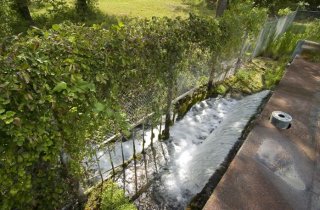An Introduction to EPA's Enhanced Aquifer Recharge Research (Webinar)
- Watch the webinar (November 28, 2023)
- Water Research Webinar Series
About the Webinar

Enhanced Aquifer Recharge (EAR) is one potential means to capture water, such as stormwater, wastewater, etc., and use the captured water to increase groundwater supply. In 2021, EPA researchers began an EAR study in the sole-source Arbuckle-Simpson Aquifer in south-central Oklahoma to address several of the research gaps identified in the report. The goals of this research are to understand the fate and transport of contaminants and the potential impacts to water quality EAR could have. Another goal of this research effort is to demonstrate the use of geophysical tools to understand the movement of water in a EAR system within a karst (fractured rock) environment. Lastly, this study will demonstrate the types of characterization and monitoring that will be needed for successful EAR implementation and operation.
This presentation presents techniques, difficulties, and challenges of monitoring stormwater movement following infiltration in a karst aquifer system. Understanding of how water is moving and the monitoring needs is crucial to the understanding of potential impacts to groundwater quality and protection of groundwater.
Presenter: Doug Beak, EPA Office of Research and Development. Doug is a geologist with EPA’s Office of Research and Development, Center for Environmental Solutions and Emergency Response. During his time at EPA, Doug has developed expertise in the following research areas: EAR, water reuse, and aquifer storage and recovery (ASR); green infrastructure (GI), hydraulic fracturing, emerging contaminants, fate and transport of inorganics in the environment, and metal and metalloid speciation in sulfidic environments. His current research efforts center around water quality issues (natural and anthropogenic) associated with the use of EAR and GI using various source waters for the augmentation of groundwater. Doug is a graduate of The Ohio State University where he received his doctoral degree in 2005.
